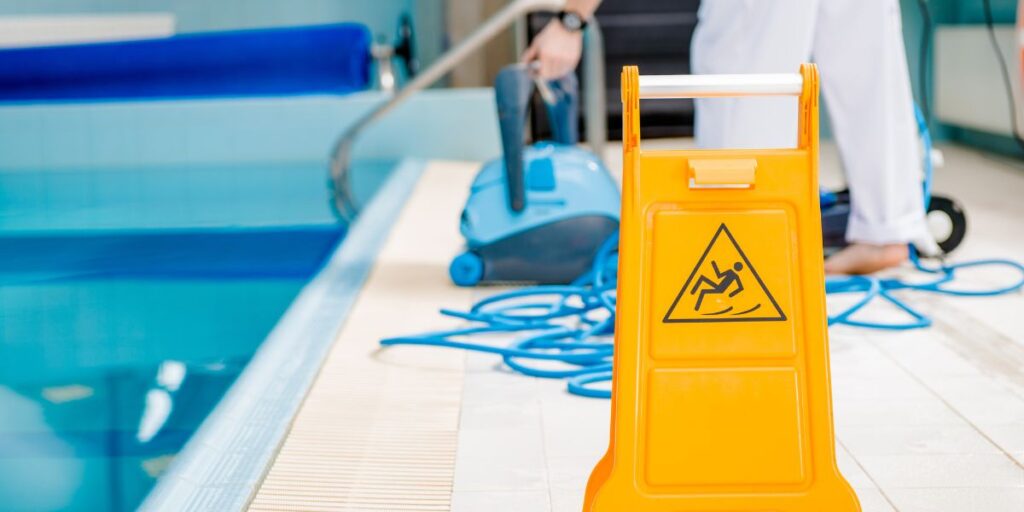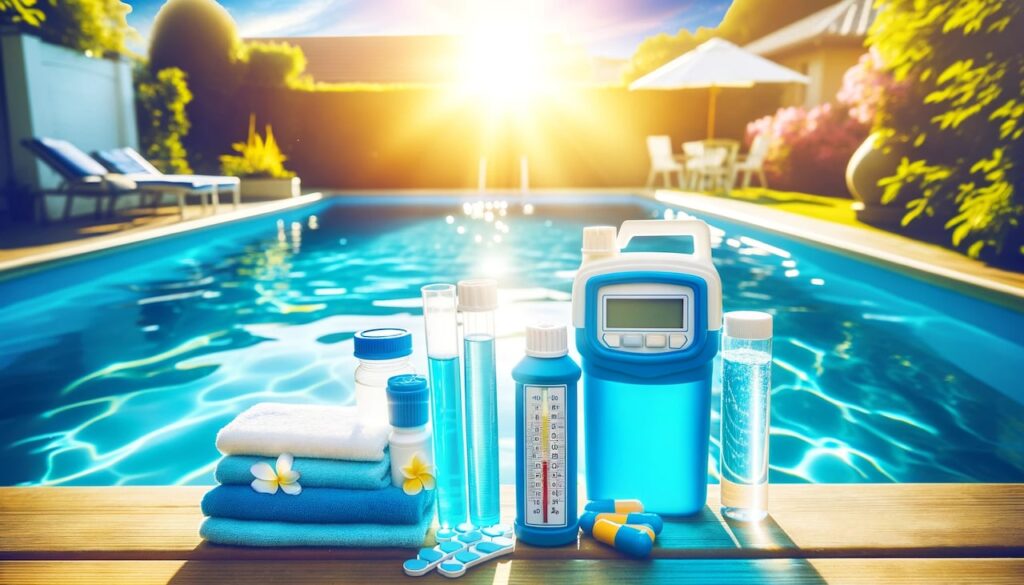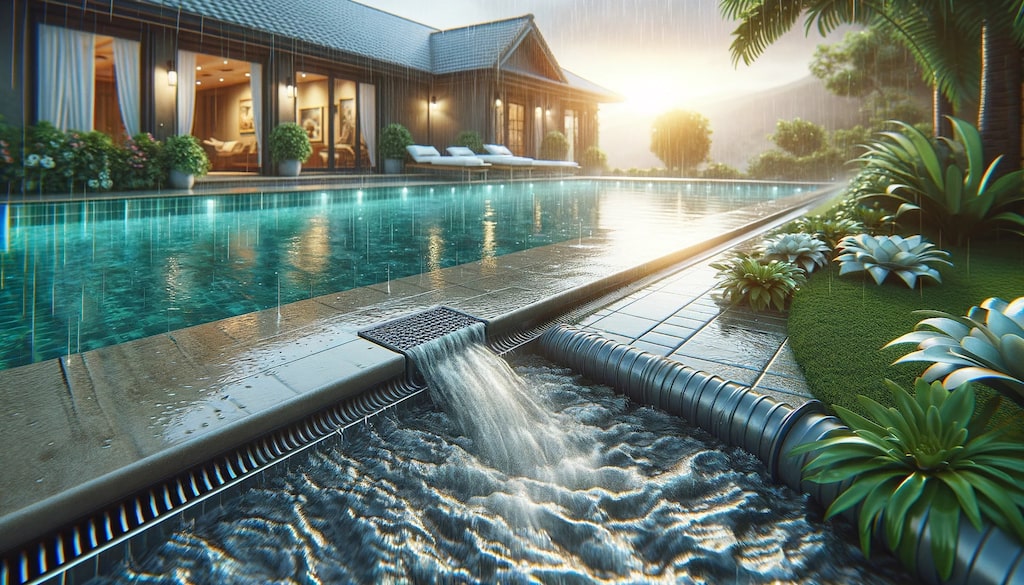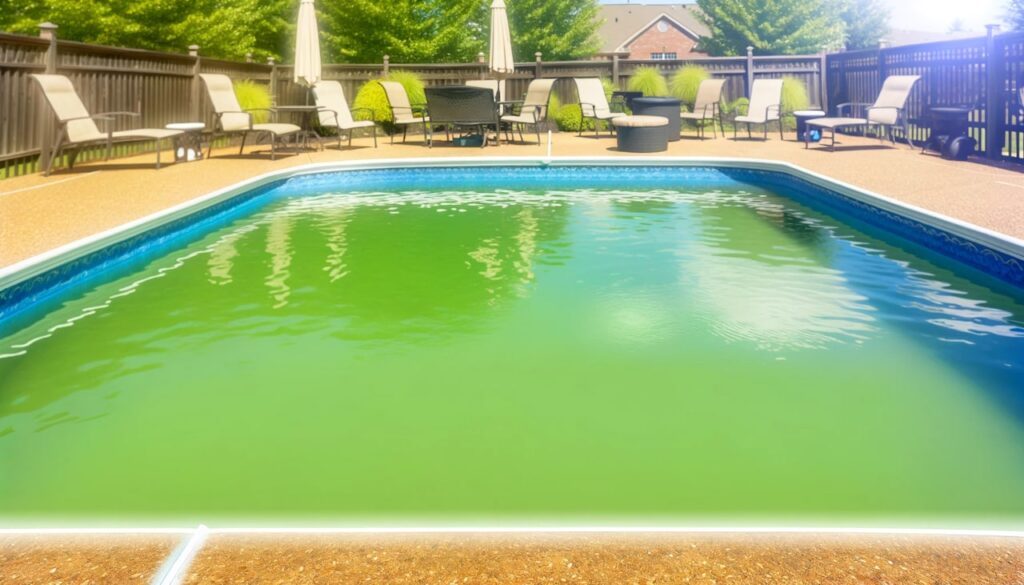Imagine a sunny day, the sky is a clear blue, and the water in your pool invites you with its serene shimmer. You step in for a refreshing dip, but as you descend the steps, your foot slips, threatening to turn this idyllic scene into a nightmare. This scenario is far from uncommon. In fact, slippery pool steps contribute to a significant number of pool-related accidents each year, underlining a hidden danger in our backyard oases.
The problem of slippery pool steps is more than just a minor inconvenience; it’s a serious safety hazard that demands attention. Over time, steps can become slick with algae, mold, or the buildup of sunscreen and body oils, posing a risk to everyone who enters the pool. This post is dedicated to addressing this issue head-on. We will guide you through understanding why pool steps become slippery and provide you with a comprehensive, step-by-step approach to fixing slippery pool steps, ensuring a safer and more enjoyable pool experience for all.
Understanding the Causes of Slippery Pool Steps

Slippery pool steps can result from several factors, primarily algae growth, mineral deposits, and a general lack of maintenance. Algae thrive in wet environments, especially in pools with imbalanced pH levels, inadequate circulation, or insufficient sanitization. Similarly, mineral deposits from hard water can create a slick layer on pool steps. Beyond these, neglecting regular cleaning allows body oils, sunscreen, and other contaminants to accumulate, further exacerbating the slipperiness.
Recognizing the importance of regular maintenance is the first step toward prevention. A well-maintained pool not only keeps the water crystal clear but also ensures that steps remain safe and non-slippery. Regular cleaning, balanced water chemistry, and proper filtration go a long way in preventing the buildup that leads to slippery surfaces.
How To Fix Slippery Pool Steps? – Step-by-Step Guide
Cleaning
Begin with a thorough cleaning of the steps. Use a pool brush to scrub away any visible algae, mold, or buildup. For stubborn areas, a mixture of water and chlorine bleach can be effective in killing algae and sanitizing the surface. Rinse the steps thoroughly to remove any chemical residue.
Anti-Slip Spray
For underwater surfaces made of fiberglass or acrylic, consider using an anti-slip spray. These sprays create a thin, textured layer that increases grip underfoot without altering the appearance of the steps.
Stone Grip
For pool steps and flooring, especially those made of tile, Stone Grip products offer an excellent solution. These treatments chemically react with the tile surface to create micro treads, significantly improving traction and reducing the risk of slips.
Non-Slip Paint
For pool decks and areas surrounding the pool, high-quality non-slip paint can provide a durable and effective anti-slip surface. This is particularly important for pools with natural stone tiles, which can be dangerously slippery when wet.
Choosing the Right Non-slip Treatment
The choice of non-slip treatment—whether anti-slip tape, paint, mats, or chemical applications—depends on the pool’s specific needs and the materials involved. Consider the aesthetic and practical implications of each option to determine the best solution for your situation.
Follow the manufacturer’s instructions closely when applying any non-slip treatment. Preparation of the surface is key; ensure it is clean, dry, and free of any debris.
The effectiveness of any non-slip treatment hinges on its ability to fully dry and cure. Rushing this process can compromise the treatment’s durability and slip-resistance. Patience during this stage ensures a lasting solution to slippery pool steps.
Alternative Solutions To Fix Slippery Pool Steps
- Preventive measures are as crucial as direct treatments. Regularly clean your pool and steps, maintain balanced water chemistry, and consider using absorbent mats around the pool area to reduce water accumulation on hard surfaces.
- For those seeking professional assistance, companies like Cutters Pools specialize in pool maintenance and can offer targeted solutions for slippery pool steps, providing peace of mind through expert services.
Conclusion
The risk posed by slippery pool steps is significant, but with the right approach, it can be effectively mitigated. By understanding the causes, diligently applying the appropriate treatments, and engaging in regular maintenance, you can ensure your pool remains a safe and enjoyable haven. This guide has equipped you with the knowledge and steps needed to address this common issue, enhancing the safety of your pool environment.
Are your pool steps becoming a slip hazard, or have you noticed a crack that needs immediate attention? Look no further than Cutters Pools. Specializing in both minor repairs and comprehensive renovations, we offer Austin homeowners top-notch service. From restoring safety to your pool steps to giving your pool a complete refresh, our expert team is committed to delivering outstanding results that exceed your expectations. Let Cutters Pools be your go-to for all pool-related needs.
Frequently Asked Questions
Q.1 What makes a pool slippery?
Ans A pool becomes slippery primarily due to the growth of algae, accumulation of body oils, sunscreen, and other organic materials. Improper chemical balance and lack of regular cleaning contribute to this issue, creating a biofilm on surfaces that reduces traction, making the pool steps and floor hazardous to users.
Q.2 What can I do about slippery pool steps?
Ans To combat slippery pool steps, start with thorough cleaning to remove algae or buildup. Consider applying an anti-slip coating, such as non-slip paint or adhesive strips designed for underwater use. Regular maintenance and the application of anti-slip treatments can significantly improve safety and prevent accidents.
Q.3 How do you prevent slipping in a pool?
Ans To prevent slipping in a pool, ensure regular cleaning to remove algae and buildup. Install anti-slip mats or adhesive strips on steps and around the pool. Apply non-slip coatings to the pool deck and steps. Maintain water chemistry to discourage algae growth, and encourage swimmers to use caution when entering and exiting.
Q.4 What anti-slip tape can be applied underwater?
Ans For underwater applications, look for specialized waterproof anti-slip tape designed specifically for submerged conditions. These tapes are made with durable, adhesive materials that can withstand constant exposure to water and chemicals found in pools, ensuring a secure, non-slip surface on pool steps and floors for enhanced safety.


